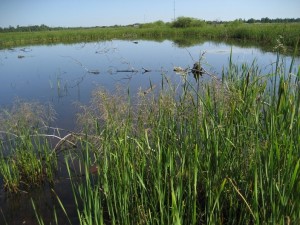At a recent Law School event, several panelists (including me) discussed the potential for the Trump administration to make important changes to the law in our respective areas of concentration. I said at the time that environmental law has proven quite resistant to previous efforts that would have weakened or erased it. Part of this resiliency is due  to the lengthy time horizon typically involved in repealing and replacing statutes and rules; another major factor is longstanding public opposition to such changes. With that said, major attempts are underway that, if implemented, would seriously undermine bulwarks of environmental law such as the Endangered Species Act, the National Environmental Policy Act, and the Antiquities Act. The Trump EPA has also recently begun the long process of repealing and replacing the Clean Water Rule, under direction from President Trump to rewrite it in a manner consistent with one of Justice Scalia’s previous opinions.
to the lengthy time horizon typically involved in repealing and replacing statutes and rules; another major factor is longstanding public opposition to such changes. With that said, major attempts are underway that, if implemented, would seriously undermine bulwarks of environmental law such as the Endangered Species Act, the National Environmental Policy Act, and the Antiquities Act. The Trump EPA has also recently begun the long process of repealing and replacing the Clean Water Rule, under direction from President Trump to rewrite it in a manner consistent with one of Justice Scalia’s previous opinions.
Whether or not those efforts succeed, the executive branch has a major impact on the day-to-day operation of environmental law even in the absence of major statutory or regulatory reforms. The most direct avenues for this are through budgeting decisions and enforcement discretion. With debates over spending engulfing Washington, it’s worth examining the potential impact of President Trump’s recent “America First – Budget Blueprint” on the Great Lakes region. Several features of the proposal have generated controversy and may be especially significant in the Great Lakes region:
- Proposed elimination of the Great Lakes Restoration Initiative (GLRI). The proposed budget zeroes out funding for the GLRI, an Obama-era initiative for which, since 2010, Congress has appropriated about $300 million a year. During that time, GLRI funding has underwritten over 3,400 projects in the Great Lakes region through awards by fifteen federal agencies for everything from industrial harbor remediation to invasive species control. For example, the successful remediation of Sheboygan River and Harbor took more than $100 million, including about $58 million in GLRI funding. The proposed elimination of the program has drawn strong opposition from both sides of the aisle, including Wisconsin Governor Scott Walker and Senator Tammy Baldwin. Given that voters in Michigan, Wisconsin, and Pennsylvania may have carried Trump to the White House, elimination of this “enormously popular” program could be a political false step.
- Proposed cuts to Environmental Protection Agency staffing and budget levels. A newly-formed group of former federal and state employees calling itself the “Environmental Protection Network” recently released a detailed analysis of the proposed budget for the Environmental Protection Agency. The key takeaways include a 31% cut to EPA’s operating budget and a 21% cut to its workforce, thus “returning EPA to inflation-adjusted funding levels not seen since the 1970s.” The budget contemplates the elimination of most EPA climate programs, a 23% cut in EPA’s enforcement program, and a 45% drop in EPA grants to states, tribes, and local governments. The latter is especially noteworthy given the administration’s previous comments that the state authority and funding may ascend where EPA authority and federal funding recedes. (Of course, a state may act on its own, as New York has recently done in a noteworthy $2.5 billion dollar bill) Some recent rumors suggested EPA could even close its regional office in Chicago, consolidating it with another office in Kansas City and impacting many of the agency’s efforts in the Great Lakes region. EPA has since denied that those discussions have yet occurred.
- Infrastructure funding. On the campaign trail, Trump proposed $1 trillion in infrastructure spending, and the proposed budget calls for slight increases in EPA’s state revolving funds to build clean water and drinking water infrastructure. However, some commentators have questioned whether a crippled EPA will be able to effectively administer the relevant programs.
- Rural water program funding. The proposed budget eliminates the Department of Agriculture’s $498 million loan and grant program that provides water infrastructure funding to communities with fewer than 10,000 people. Trump has called the program “duplicative,” but the Wisconsin Rural Water Association says its elimination would be “devastating for small communities” because “[i]t’s the number one funding mechanism they use for infrastructure.”
Of course, President Trump’s budget is not the final word. Congress, not the executive, has the power of the purse. Yet the “Budget Blueprint” gives important clues as to the Trump administration’s policy priorities.
May 1 update: Members of Congress appear to have agreed on a budget bill that leaves EPA and GLRI funding largely intact, rejecting President Trump’s initial proposals to reduce or eliminate those appropriations.
